Swordfighting
Good morning! Saxey here, filling in, and reacting to current events by diving into a froth of historical swashbuckling.
First, a bisexual sword-fighting opera singer. I heard about Juliet D’Aubgny from this enthusiastic twitter string, and then followed her to Rejected Princesses.
One night, while out carousing on the town, a particularly ardent man named d’Albert began crudely hitting on her. … she got into a fight with him and two of his buddies, won, and ran her sword clean through his shoulder. She felt a bit bad about that, so she visited her impaled victim in the hospital and hooked up with him anyway. Although the relationship only lasted a short while, they were apparently lifelong friends.
http://www.rejectedprincesses.com/princesses/julie-daubigny
Secondly, a fencer, spy, and blackmailer of a king. Chevalier D’Eon lived up until middle age as a man, and from then onwards as a woman - Mary Wollstonecraft listed D’Eon as one of ‘a few women who, from having received a masculine education, have acquired courage and resolution’. The National Portrait Gallery acquired a portrait of D’Eon in 2012:
D’Eon first came to London in 1762 as part of the French embassy and helped negotiate the Peace of Paris, which ended the Seven Years War. Despite being awarded the Croix de St Louis, [D'Eon] refused to return to France when recalled. Instead, d’Eon published secret correspondence that revealed French ministerial corruption and blackmailed the French King by threatening to disclose secret information about French invasion plans.
http://www.npg.org.uk/research/new-research-on-the-collection/the-chevalier-deon.php
There are understandably debates about how the Gallery describe and present D’Eon:
...the intent of the artist and whether d’Eon wanted to be portrayed as a gender puzzle is unknown; such an interesting figure may very well have insisted on being presented as such.
http://britishscholar.org/publications/2012/06/30/identification-please-complications-of-display-and-gender-identity-at-the-national-portrait-gallery/#_ftn1
Bonus picture: from the British royal family’s art collection, here’s the Chavalier beating a chap at fencing.
Have the best of all possible Fridays,
Saxey
#feministfriday episode 92 | Kindness
It has not been a banner week for humanity. Please enjoy two long articles about people being kind to one another.
Of course it's another article about weddings. I was vaguely aware that getting married in Disneyland is something people do - this is a lovely piece about why and how they support each other. It’s delightful. Also:
At Disney, there's also a spirit of embracing weddings of every kind. From accommodating dietary restrictions to making sure those with physical impairments can enjoy the parks, Disney strives to be inclusive of all guests, and no matter what kind of wish your heart makes, you are welcome. Disney Fairy Tale Weddings began taking bookings from same-sex couples in 1997, long before a single American state would recognize the unions as legal.
www.racked.com/2016/6/7/11853180/disney-weddings-brides
Iris Murdoch and Brigit Brophy’s correspondence is quite something. This is some of the crushiest writing I have ever read! Then Iris was a bit destabilised by the fact that Brigit did not like her (Iris’) novels! There is so much here it’s hard to pick out a single pullquote, this one works though:
Dear girl, you made for once quite a sensible suggestion … that we should make each other happy. Let us do that. It may need a little care at first (like holding together two bits of cracked china…)
https://www.brainpickings.org/2016/01/26/iris-murdoch-love-letters-brigid-brophy/
Further note! I am away next Friday and the excellent Saxey will be taking the editorial reins. It will be great and I look forward to reading it on my return to a fixed structure.
Alex.
#feministfriday episode 91 | And I have art to make
Good afternoon,
Three stories about lost art and lost things, in this Fem Friday! I hope you enjoy them.
Sarah Farro was one of two African-American women novelists from the 19th century, and it seems likely that she had some hurdles to overcome to achieve that. This is an interesting analysis of why she has been largely forgotten, and the sorts of stories that get remembered and forgotten:
After doing more research, I soon realized that Farro had made her mark writing about white people – and that this may also be the reason her work was forgotten. Learning of a black woman whose race was documented, whose novel was published – but who disappeared in the historical record – can change how we think about African-American literature.
https://theconversation.com/after-the-rediscovery-of-a-19th-century-novel-our-view-of-black-female-writers-is-transformed-60016
Seen via a Kickstarter, as I had previously not heard of Daphne Oram! She wrote a pioneering book on electronic music in 1972, fifteen years after cofounding the BBC Radiophonic Workshop. A real heavy hitter. Some excellent photos in this article too:
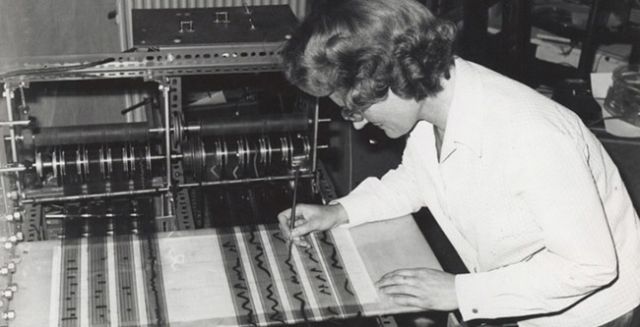 She was the first Director of the BBC Radiophonic Workshop, which she co-founded in 1958, after years of persuasion and perseverance. She predicted that computers and electronics would revolutionise music decades before they became popular, and invented a new form of sound synthesis – Oramics – which was a significant step towards this revolution.
She was the first Director of the BBC Radiophonic Workshop, which she co-founded in 1958, after years of persuasion and perseverance. She predicted that computers and electronics would revolutionise music decades before they became popular, and invented a new form of sound synthesis – Oramics – which was a significant step towards this revolution.
https://www.kickstarter.com/projects/345013107/help-us-republish-daphne-orams-an-individual-note
Now we move onto the forgotten artefacts of the everyday, one of my favourite things. Vashti DuBois has turned her house (which she lives in) into a museum, which is a terrifying thought, but marginally less so than the thought of running a B&B:
In 2014, DuBois put a call out, through the nonprofit and arts communities she'd worked in, to black women in Philadelphia. She asked women, of all ages, to contribute artifacts that embodied their experience as girls—anything from coffee cups to heirloom paintings. She received a huge collection of objects, ranging from hand tools to a painting of the singer Lauryn Hill. Then she had 10 local artists each curate a room. For instance, the laundry room is a shrine to the concept of the washerwoman, a powerful concept for many of the women. “For a lot of women of color, our grandmothers took in laundry. It’s very personal, and that history was not that long ago,” she says
http://www.smithsonianmag.com/innovation/pop-up-museum-documents-stories-philadelphias-black-women-180957996/?no-ist
Enjoy your Friday,
Alex.
#feministfriday episode 90 | Of Love
Good afternoon,
This lovely poem both reminded me of the summer and introduced me to the work of Louise Glück, who in fact and according to the below link “has a gift for getting the reader to imagine with her, drawing on the power of her audience to be amazed”. I first read this in the newsletter Pome. If you are not already subscribed to this, I cannot recommend it highly enough. The poem, and a link about Glück herself, follow:
from Happiness
I open my eyes; you are watching me.
Almost over this room
the sun is gliding.
Look at your face, you say,
holding your own close to me
to make a mirror.
How calm you are. And the burning wheel
passes gently over us.
http://www.poetryfoundation.org/poems-and-poets/poets/detail/louise-gluck
More poetry, and also more summer (even if the Canterbury Tales are spring really). I didn’t know a lot about the Wife Of Bath’s tale, and now I know a bit more, thank you to this Wikipedia entry with such headings as “Critique of antifeminism”, “Female dominance” and “Sex and Lollardy”:
Alisoun, in particular, does not behave as she should in any of her marriages. […] Carruthers’ essay outlines the existence of deportment books, the purpose of which was to teach young women how to be model wives. Carruthers notes how Alisoun's behaviour in the first of her marriages “is almost everything the deportment-book writers say it should not be”. For example, she lies to her old husbands about them getting drunk and saying some regrettable things.
https://en.wikipedia.org/wiki/The_Wife_of_Bath's_Tale
Plus Chaucer’s works are well out of copyright so you can read this fun tale today:
Husbands at the church door have I had five
For I so often have y-wedded be,
And all were worthy men in their degree.
http://www.gutenberg.org/cache/epub/2383/pg2383-images.html
Happy Friday!
Alex.
#feministfriday episode 89 | Sit Back And Enjoy The Code
Good afternoon,
A technical Fem Friday for you this afternoon!
Please enjoy this write up of a project – more broadly about mapping the relationships of people in the 1500s-1700 – and the new categories of relationship that the team had to create to express how women related to and interacted with one another. I, for example, am currently in the relationship of “communicated poorly with” and “in disgrace with” at least two of my favourite colleagues, another beautiful example of women defining for themselves how they want to interact with one another.
The diagram below is a map of the relationships of Margaret Cavendish, who has featured in at least one previous Fem Friday:
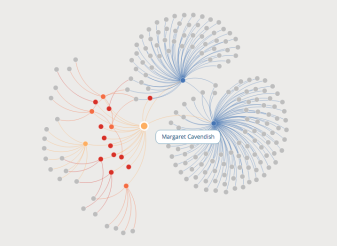 What we found as we started entering new women into the SDFB database and tried to catalogue their relationships was that the existing relationship category options were inadequate for women. In other words, while “spouse of” and “child of” were still helpful, we were stuck when it came to more ambiguous (and, thus, more frequent) female network categories.[…] We needed a relationship category for “dedicated a work to” or “referenced in writing” or “wrote a poem about.” Similarly [.. w]e needed a relationship category for “served as midwife to.”
What we found as we started entering new women into the SDFB database and tried to catalogue their relationships was that the existing relationship category options were inadequate for women. In other words, while “spouse of” and “child of” were still helpful, we were stuck when it came to more ambiguous (and, thus, more frequent) female network categories.[…] We needed a relationship category for “dedicated a work to” or “referenced in writing” or “wrote a poem about.” Similarly [.. w]e needed a relationship category for “served as midwife to.”
https://spinningwiththebraine.wordpress.com/2016/01/24/networking-women-digital-tools-and-the-archive/
Frequently, my regret in reading an obituary is not having heard of someone great while they were still alive. This obituary of Claire Gooding, journalist and hacker, is one of those:
While working as a programmer, she was challenged by a director of a South African bank to break into his "fully secure" IT system. [spoilers – ha ha ha]
http://www.computerweekly.com/news/2240054159/Former-CW-software-editor-loses-cancer-battle
Although I’m usually the first person to be cynical about new enterprise messaging systems, one reason why I quite like Slack is how publicly they commit to diversity in their hiring. There are some graphs and charts (mainly illustrating how far it still has to go) for those of you who like those sorts of things:
According to its own numbers, the company has [set] the bar for the industry in two measures: it employs the highest percentage of female engineers (and women in general) and black engineers at any tech company.
http://www.wired.com/2016/02/slack-wants-to-be-more-diverse-as-it-grows-fast/
Enjoy the long weekend if you have one,
Alex.
#feministfriday episode 88 | Bon appétit
Good morning!
Isn’t food great. Here are some articles about food for you to enjoy with your breakfast.
If you’re reading this on your way to work, the first article definitely provides a justification for getting a marmite and cheese toastie from Starbucks. If you are in America, it’s highly unlikely that you’ll get to try this amazing product, which in real life looks – rest assured – a lot more disgusting than pictured here and also tastes a lot better. Back to the justification – please enjoy the following long article about wellness, disordered eating, and a really interesting study on what our emotions around food do for us:
When participants were fed puréed meals (comprised of the kinds of foods they knew and enjoyed), they absorbed on average 70 percent less iron than they did when fed those same meals in their more appetizing, un-puréed, format. The pleasure that these women anticipated, and then relished, in their food actually helped them to be more nourished than when they received the same nutrients in a less palatable package. It was a startling result, and highlights what wellness so often overlooks: that when we separate pleasure from nutrition in our diets, we end up less nourished—physically and emotionally—than ever. Enjoying your food, it turns out, is good for you.
http://www.vice.com/read/ruby-tandoh-eat-clean-wellness
INTERLUDE: look at these beautiful shiny cakes by Olga Nevoska. There are more on her Instagram, I can’t stop looking at them:
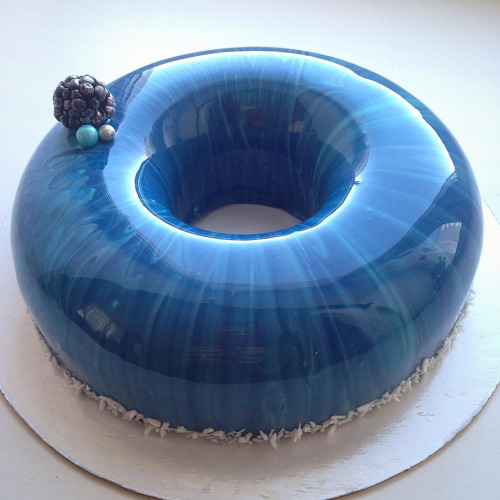 http://www.contemporist.com/2016/05/12/when-does-food-cross-the-line-and-become-art/
http://www.contemporist.com/2016/05/12/when-does-food-cross-the-line-and-become-art/
That said, there are some things that are always going to put you right off your feed. That’s why I welcome so wholeheartedly this useful guide to what is always a difficult time:
It’s hard to know how to live your healthiest life when you’re experiencing a stressful change in your life, such as receiving a voicemail. When your day is derailed by a notification that says there’s a message that demands you just sit and listen to, like, the whole thing, you’ll be wondering what you ever did to deserve this, and how you can survive.
http://reductress.com/post/what-to-eat-and-what-to-avoid-when-you-realize-you-have-a-voicemail/
Happy Friday,
Alex.
#feministfriday episode 87 | Summer jams, and some jokes that will amuse and delight at the country club
Hullo everyone,
It’s the summer! Or at least it’s very summery, or at least it’s very summery in London, and that’s where I am so please enjoy these summer jams from lady rappers that I like. There are also some jokes about some - but not all - men.
Let’s start with Dej Loaf, who has done songs with both Drake and Future and come out of the experience smelling of roses. Good lass.
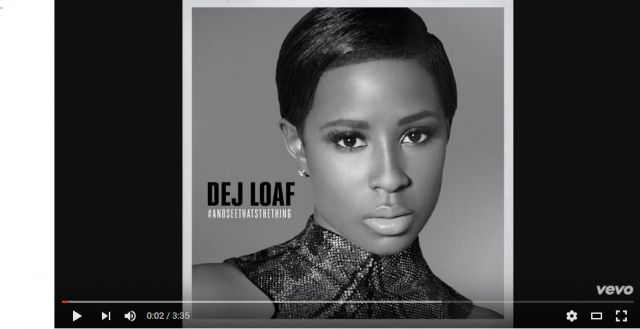 https://www.youtube.com/watch?v=r86-7UA6jaU
https://www.youtube.com/watch?v=r86-7UA6jaU
Where does a mansplainer get his water?a
Next, Kamiayah, who I heard for the first time last night and who is the reason this newsletter is on this topic. SHE IS SO GOOD, please listen to this immediately and also in a park this weekend.
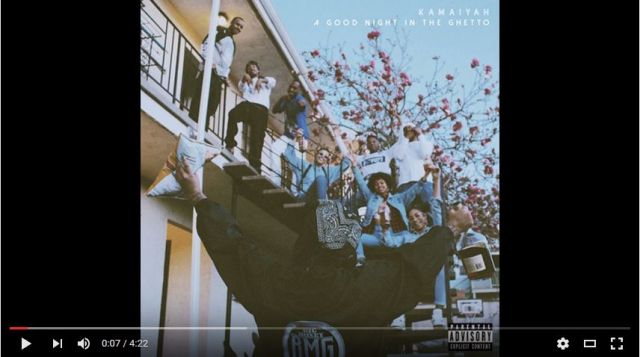 https://www.youtube.com/watch?v=IoGMrTgX0Es
https://www.youtube.com/watch?v=IoGMrTgX0Es
How many men’s rights activists does it take to change a lightbulb?b
Have a great weekend everyone,
Alex.
aFrom a well, actually
bKNOCK KNOCK JOKES, ALSO, EXIST
#feministfriday episode 86 | It Is My Birthday Tomorrow
Happy Friday! It’s my birthday tomorrow so today we discuss May 7th and also birthdays.
I feel like I’ve not covered a lot about saints recently, so you have two women of faith to read about today. The first is an obscure young woman called Joan of Arc who on May 7th 1429 ended the siege of Orléans by pulling an arrow out of her shoulder and just getting right back on it. This is the first result about a woman on this Wikipedia page so really getting the party started here:
But perhaps the most interesting fact connected with this early stage of her mission is a letter of one Sire de Rotslaer written from Lyons on 22 April, 1429, which was delivered at Brussels and duly registered, as the manuscript to this day attests, before any of the events referred to received their fulfilment. The Maid, he reports, said "that she would save Orléans and would compel the English to raise the siege, that she herself in a battle before Orléans would be wounded by a shaft but would not die of it, and that the King, in the course of the coming summer, would be crowned at Reims, together with other things which the King keeps secret."
http://www.newadvent.org/cathen/08409c.htm
There is only one woman of faith who is specifically remembered on May 7th, so thank you for coming through for me the Episcopal church, with Harriet Starr Cannon, who founded an order of Augustinian nuns and dedicated her life to helping others. Here’s a contemporary account of her order’s work in a Memphis in the grip of yellow fever:
That love should speak to our hearts ; as we read of these fruits of divine faith, our own love should kindle, and our faith should be strengthened; the supernatural world is brought very near to us; it seems more real, for a season, than this. There is another reason why some account of these things should be given. It is said by the skeptical theorists of our day, the philosophers of naturalism and materialism, that self-devotion in a religious life is a past idea; that it pertains to an overstrained and false enthusiasm; that women have no mission now to lift them above the average level around them
http://anglicanhistory.org/usa/csm/memphis1.html
Also, 8th of May is Julian of Norwich day in the Anglican calendar, so this can serve as your reminder that all shall be well and all shall be well and all manner of things shall be well.
Finally, not about a saint, and not about my birthday, but it’s about a birthday and it’s written by a woman and it always makes me laugh. Here is Nicole Cliffe’s Benedict Cumberbatch fan fiction:
NICOLE: And, of course, I was devoted to the memory of my late husband.
REPORTER: Yes, how long had he been dead at this point?
NICOLE: (firmly) Thirty years.
REPORTER: Such a long time for you to have been devoted to his memory, especially considering you are now only twenty-eight years old yourself.
http://the-toast.net/2014/07/02/benedict-cumberbatch-the-fan-fiction/
Have a great weekend! Enjoy the heatwave London!
Alex.
#feministfriday episode 85 | Warriors
Good morning,
Here is a Fem Friday that is all about Iran.
Surfing is mainly a sport done by women in Iran. You’re probably wondering about the clothes, which this article covers, but it’s also nice to read for the beautiful photos of Iran and Iranian beaches, especially if you wish as strongly as I do that you were on holiday:
"In this case, surfing is a sport that's been initiated and led by women—that is a bit unusual. Because it's not a traditional Iranian sport and hadn't been done before, there were no rules defining how it could and couldn't be done," Dr Britton says. It is accessible despite gender and other social boundaries. This all means the sport had a […] unique meaning and identity attached to it.
https://broadly.vice.com/en_us/article/riding-the-wave-of-feminism-meet-the-female-surfers-of-iran
As you perhaps already know, Iran has a longstanding and substantial tradition of poetry. Allow me to introduce Forough Farrokhazad, whose struggles around domesticity in the mid twentieth century will probably feel familiar. She died young, in a car crash, after a lunch with her mother who later recalled their conversation over lunch as the nicest that they ever had. You can read her story and some poems at the link below:
Sleeping in a dark grave is happier for you
than this abject servitude and misfortune;
where is that proud man..? Tell him
to bow his head henceforth at your threshold.
Where is that proud man? Tell him to get up
because a woman is here rising to battle him;
her words are the truth, in which cause
she will never shed tears out of weakness.
http://www.iranchamber.com/literature/ffarrokhzad/forough_farrokhzad.php
Going further back in history, ancient Persia also had a solid tradition around women warriors. Here’s a very thorough survey:
A Reuters newscast from Tehran in December 4, 2004 reported on the findings of an archaeologist who had been engaged in excavations near Tabriz, in Iran’s northwest province of Azarbaijan. A series of DNA tests revealed that the 2,000 year old bones of an entombed warrior and accompanying sword belonged to a woman. As noted by Alireza Hojabri-Nobari to the Iran-based Hambastegi Newspaper: “Despite earlier comments that the warrior was a man because of the metal sword, DNA tests showed the skeleton inside the tomb belonged to a female warrior…”
http://kavehfarrokh.com/news/the-persian-lioness-iranian-women-in-history/
Happy Friday,
Alex.
#feministfriday episode 84 | Shed Life
Hullo,
This as every week, please appreciate that Fem Friday is completely free of topical content! It’s about sheds today.
As someone who always wanted a play house growing up, I engage deeply with the concept of “she sheds”:
Unlike the man cave, a she shed is separate from the main house. As the name suggests, they’re compact dwellings typically located in the backyard that are roughly the size of a garden hut. Aside from that, however, there are no rules for a she shed and the decor possibilities are endless. Popular uses include craft rooms, reading areas, and yoga studios.
http://www.mymodernmet.com/profiles/blogs/she-sheds
This isn’t a shed, but it may as well be. Macy Miller, Midwestern architect, built her own tiny home with her own, probably normal sized, hands. Living in <200 sq ft (with a GREAT DANE how is this possible) sounds really quite oppressive but each to their own:
The hardest and probably most daunting part for me was all of my electrical, because I had no experience with electrical whatsoever. I never had any building experience, either. I went to school for design, which is a lot different than building. So wiring the house was scary to me, because if I did something wrong, I could shock myself and hurt myself, or, you know, light it on fire. But … I just got a book, I read about it, watched YouTube videos.
http://www.npr.org/2013/12/27/257560971/architects-dream-house-less-than-200-square-feet
It’s not noted in this article, but I bet Gertrude Jekyll had a brilliant shed, maybe several sheds:
Jekyll formed alliances with the garden writer William Robinson and the architect Edwin Lutyens, which resolved ideological struggles and set new standards for garden-making by thoughtful experiment and reasoned moderation
http://www.countrylife.co.uk/gardens/gardening-tips/great-british-garden-makers-gertrude-jekyll-25395
Happy Friday!
Alex.